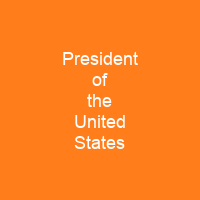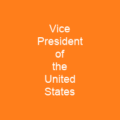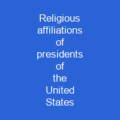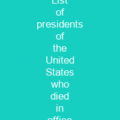The President of the United States: A Seat of Power and Prestige
From George Washington to Modern Times
Imagine stepping into the shoes of the most powerful person in the world, directing a nation’s affairs from the White House. The president of the United States is not just a figurehead; they are the head of state and government, commanding immense power and influence over both domestic and international matters. But how did this role evolve? Let’s dive into the history that shaped the modern presidency.
The Early Years: From Articles to Constitution
Back in 1781, when the United States was still finding its footing as a nation, the Articles of Confederation were drafted. These articles established a central authority without legislative power, making Congress merely a forum for resolutions rather than a law-making body. It’s hard to believe that such a structure could govern a country, isn’t it? Yet, this system faced numerous challenges, leading to economic crises and internal unrest by 1786.
It was during this time of turmoil that the Constitutional Convention took place in Philadelphia. Here, state delegations brought diverse institutional arrangements and a desire for stronger executive branches. The presidency emerged from these closed-door negotiations, setting the stage for what would become one of the most powerful roles in the world.
The Evolution of Presidential Power
From George Washington to Franklin D. Roosevelt, the office of the president has seen significant growth and change. Washington set norms by retiring after two terms, but his successors like Andrew Jackson marked a shift towards increased public participation as the nation expanded westward. The presidency became more powerful under Abraham Lincoln during the Civil War, yet it also faced challenges with Andrew Johnson’s failure to lead effectively.
Franklin D. Roosevelt’s New Deal era saw an expansion of federal power and the creation of a large presidential staff. His successors, Harry Truman and Dwight Eisenhower, served two terms as the Cold War established the president as a global leader. However, after Lyndon B. Johnson’s loss and Richard Nixon’s Watergate scandal, Congress enacted reforms to reassert its dominance.
Modern Challenges and Controversies
The modern presidency has become a subject of intense debate. Critics argue that it has become too powerful, unchecked, unbalanced, and ‘monarchist’ in nature. The Constitution vests lawmaking power in Congress’s hands, but the modern presidency exerts significant influence over legislation through vetoing and signing bills.
Presidents can be involved in crafting legislation by suggesting, requesting, or even insisting that Congress enact laws they believe are needed. They control a vast array of agencies that can issue regulations with little oversight from Congress. The president is empowered to call special sessions of one or both houses of Congress and has the authority to take care that the laws be faithfully executed.
Foreign Affairs and Military Power
The president must receive ambassadors, appoint them, and negotiate agreements with foreign governments. Foreign affairs have become a critical aspect of presidential power due to advances in technology. The president is commander-in-chief of the US Armed Forces, responsible for military direction and disposition, but the degree of authority granted to this role has been debated throughout history.
While operational command of the Armed Forces is delegated to the Department of Defense, normally exercised through the secretary of defense, presidents have a significant say in military matters. They can issue directives like presidential proclamations and executive orders, which are subject to judicial review but can be overturned by Congress.
The Role of the President
Presidents make political appointments, including up to 4,000 officials upon taking office, with 1,200 requiring Senate confirmation. They control a vast array of agencies that can issue regulations with little oversight from Congress. The president is empowered by Article II, Section 3 of the Constitution to call a special session of one or both houses of Congress.
Presidents have an Executive Office surrounding them with staff, issuing directives like presidential proclamations and executive orders. They manage federal operations and issue directives, but they are subject to judicial review and can be overturned by Congress. The president is head of the executive branch and is constitutionally obligated to ‘take care that the laws be faithfully executed.’
Imperial Presidency and Controversies
The modern presidency has been described as an ‘imperial’ one, with critics arguing too many legislative and budgetary powers have slid into the hands of presidents. They can appoint a ‘virtual army of ‘czars” and make signing statements about legislation that are unconstitutional.
Executive privilege allows presidents to withhold communications made directly to them from disclosure, with exceptions in criminal prosecutions and civil suits. The state secrets privilege permits withholding of information that could harm national security, but it has been used to cover up government wrongdoing. The degree to which a US president is personally immune from court cases is contested and has been the subject of several Supreme Court decisions.
Presidential Traditions and Celebrity Status
The presidency is considered a premier celebrity, with some arguing that images are manipulated by administration officials and presidents to create an idealized image of the office. The president is typically seen as the head of their party, with tensions between a president and party members possible if they lose significant support.
With the US being a global leader, the president is often viewed as a world leader and the most powerful political figure. The modern presidential campaign begins before primary elections, with the two major parties using them to clear the field of candidates before their national nominating conventions.
The Electoral Process
Presidents are elected indirectly by voters through the Electoral College, with each state and the District of Columbia entitled to a number of electors equal to its total delegation in Congress. The system was overhauled through the Twelfth Amendment, which required the House to choose a president from among the top three electoral vote recipients.
The president is elected for a four-year term, with the power to sign or veto legislation and possess significant domestic and international power. The office has seen its share of controversies, including impeachment proceedings against Andrew Johnson, Bill Clinton, and Donald Trump; none were convicted by the Senate.
Conclusion
The presidency is a complex role that balances tradition with modern challenges. From George Washington to today’s leaders, the office continues to evolve, shaping the course of American history. As we look towards the future, one thing remains clear: the president of the United States wields immense power and influence over the nation’s destiny.

You want to know more about President of the United States?
This page is based on the article President of the United States published in Wikipedia (retrieved on March 1, 2025) and was automatically summarized using artificial intelligence.







